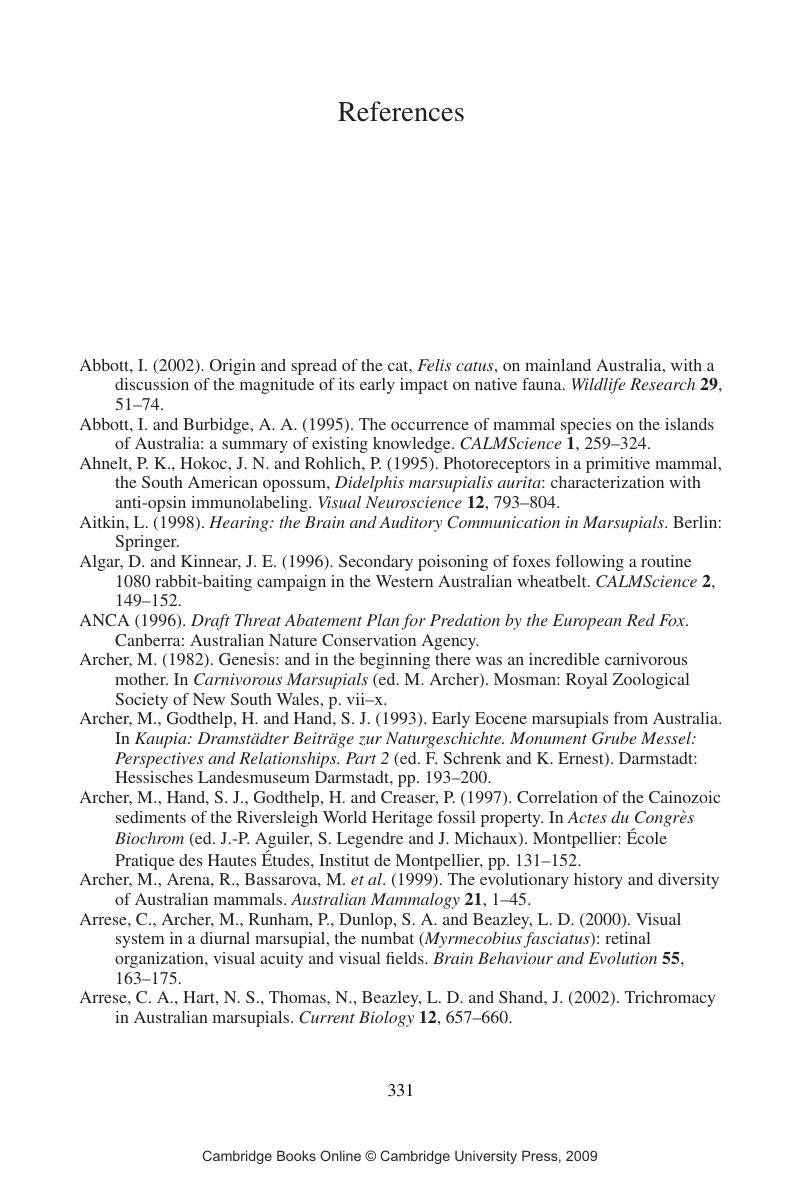Book contents
- Frontmatter
- Contents
- List of Contributors
- Preface
- 1 The evolution and classification of marsupials
- 2 What marsupials can do for genetics and what genetics can do for marsupials
- 3 Reproduction
- 4 Lactation
- 5 Nutrition and digestion
- 6 The nervous system
- 7 The immunolymphatic system
- 8 Ecology and life histories
- 9 Behaviour
- 10 Conservation and management
- References
- Index
- Plate Section
- References
References
Published online by Cambridge University Press: 07 August 2009
- Frontmatter
- Contents
- List of Contributors
- Preface
- 1 The evolution and classification of marsupials
- 2 What marsupials can do for genetics and what genetics can do for marsupials
- 3 Reproduction
- 4 Lactation
- 5 Nutrition and digestion
- 6 The nervous system
- 7 The immunolymphatic system
- 8 Ecology and life histories
- 9 Behaviour
- 10 Conservation and management
- References
- Index
- Plate Section
- References
Summary

- Type
- Chapter
- Information
- Marsupials , pp. 331 - 364Publisher: Cambridge University PressPrint publication year: 2006



